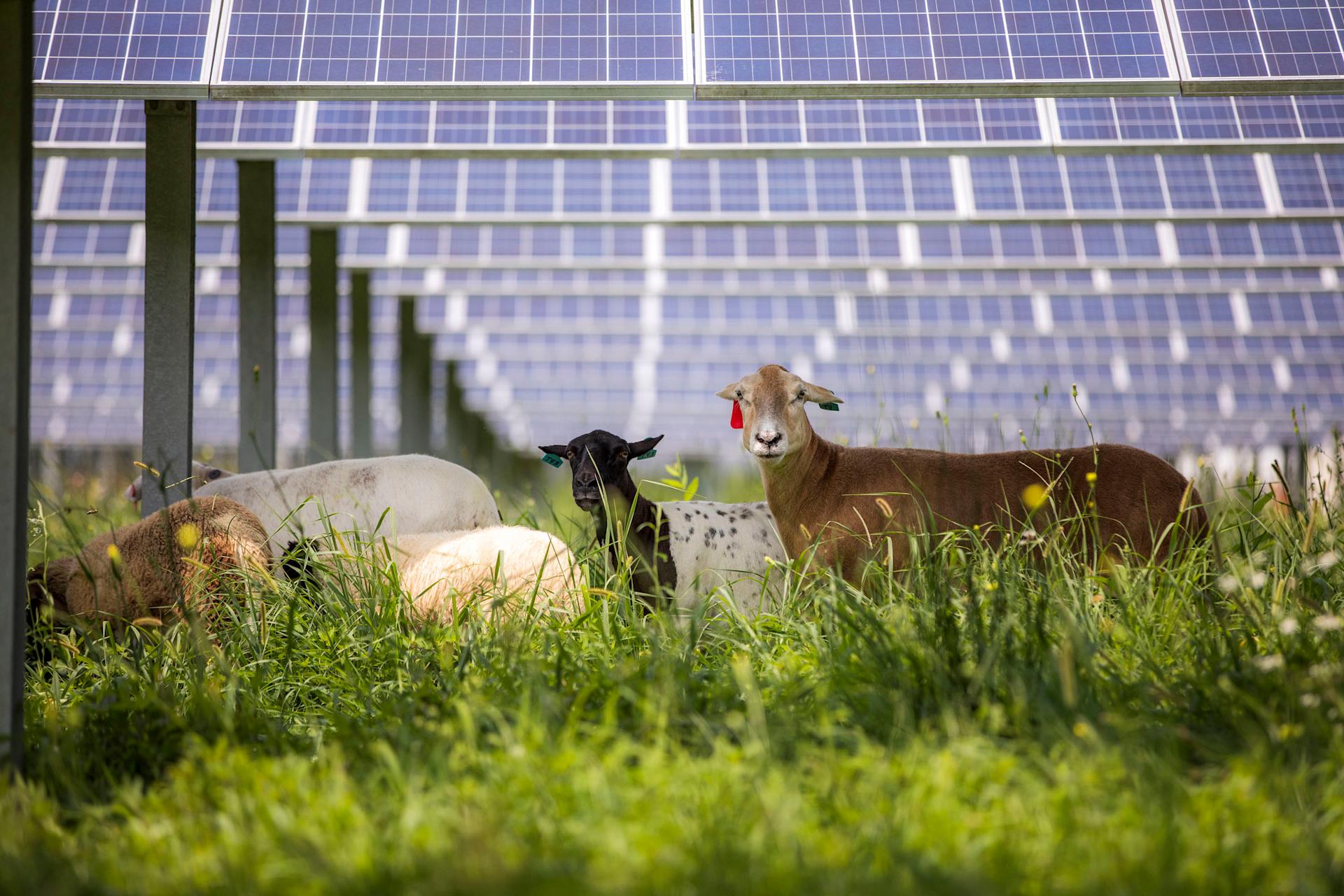
Climate & energy
Eco-friendly greenhouses
Migros is promoting a rapid move to heating greenhouses without the use of fossil fuels.
navigation

Climate & energy
Could solar modules above vines and potato fields close our electricity gaps? Yes, says Mareike Jäger, lecturer at Zurich University of Applied Sciences, and explains how this could work.
Imagine vertical photovoltaic modules on pastures where cows are not disturbed as they graze, and even get a little shade. Vineyards or berry crops could also be roofed with solar panels, or farmland. That means we can produce food and generate electricity at the same time. The big advantage here is that solar systems do not take any land away from agriculture.
Absolutely not! That would be unthinkable. However, there is plenty of space we can use that isn’t incredibly attractive. For example, meadows directly adjacent to industrial areas, or spaces along motorways or near settlements.
There is actually has a lot of potential in this step, but the development of roof panels is progressing too slowly. That’s why both solutions are needed. In agriculture, the areas where we can fit modules are much larger, which results in greater amounts of energy being generated. However, systems in agriculture – namely Agri-photovoltaics (Agri-PV) – have other advantages with regard to climate change.
The systems provide shade, which means less water evaporates, as shown by studies from the USA and other countries. There are also certain types of systems that collect rainwater, which can be used to water the plants at a later date. In the future, there will be less precipitation in some regions such as Northwestern Switzerland, and it will be distributed differently, for example concentrated in a storm. Forecasts also predict that winters will have more precipitation. It is therefore a huge advantage if companies are able to collect the surplus in basins, some of which are underground.
It could make a significant contribution to the energy transition. We performed a thought experiment: 10,000 hectares of arable land would be enough for Agri-PV to cover 10 percent of Switzerland’s total electricity demand in 2050. That’s one percent of our total arable land. Just under one percent of our permanent crops, especially vineyards, would also suffice. Or 2.6 percent of permanent grassland, which means that almost 28,000 hectares of pasture would then be covered with panels.
With Agri-PV, we can harvest food and generate electricity on the same area of land.
Switzerland currently consumes a total of 60 terawatt hours per year. We could produce six times that amount with solar systems in agriculture. This is what the latest calculations show us.
No. We have calculated a total potential that is spread over around 56 percent of the available agricultural land. However, this is only the theoretical potential. It is more realistic to assume that Agri-PV will cover around 10 percent of electricity demand.
At the very beginning. There are only a few systems in place. These include the Insolight systems, which are supported by Migros, and our own research units in the vineyards of Walenstadt.
Firstly, the legal basis needs to be formulated more clearly, specifically regarding the systems it applies to, for example. Secondly, more research is needed in this area. Finally, we need to work on communication. Many people are afraid of areas being completely covered up. The dual use of land for agriculture and electricity production is a real win-win solution.
We are acting now – for the climate and for you. Find out exactly what we are doing in our Stories.